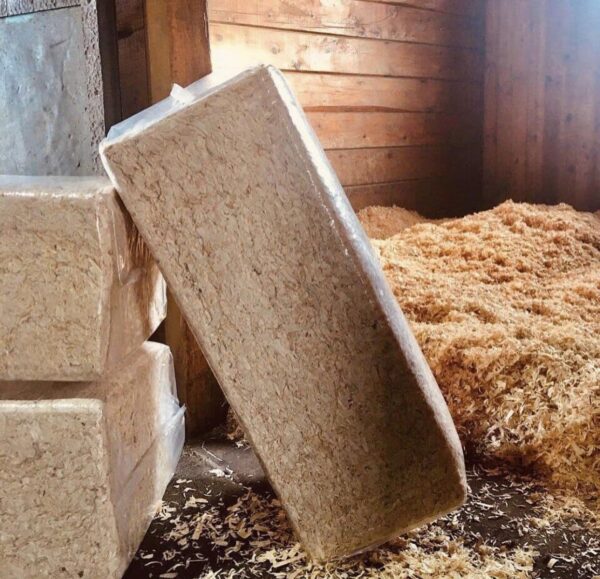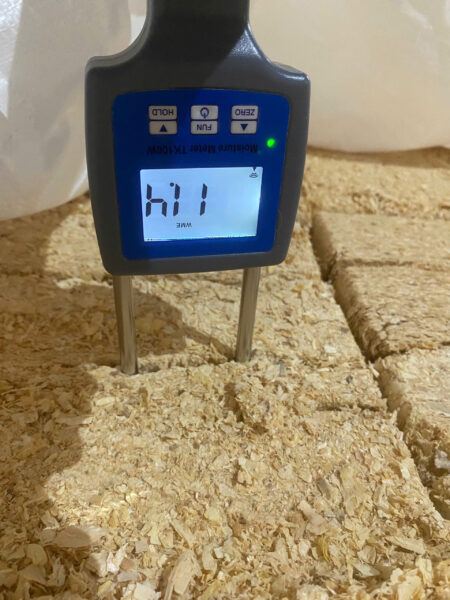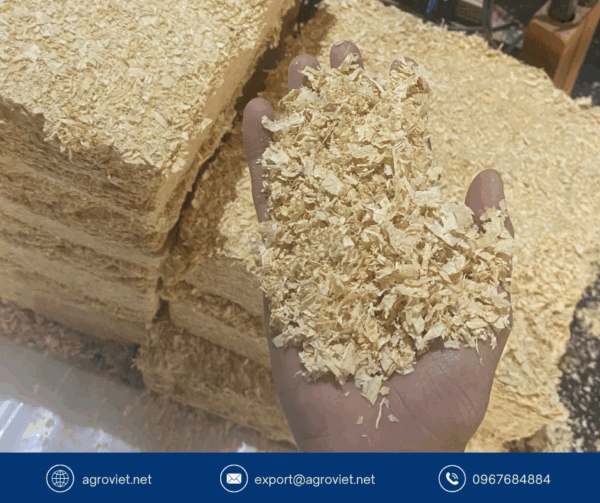Mixed Wood Shavings have become increasingly popular in livestock farming due to their excellent moisture absorption, eco-friendliness, and cost-effectiveness. However, improper use can reduce their effectiveness and even impact animal health. To help you optimize the use of mixed wood shavings, Agroviet highlights 7 common mistakes in livestock farming and provides practical solutions to address them.
1. Choosing Low-Quality Mixed Wood Shavings
Mistake: Many farms opt for cheap mixed wood shavings from unreliable sources, resulting in products with high impurities, dust, or excessive moisture. This can cause respiratory irritation in animals or reduce the bedding’s moisture-absorbing capacity.
Solutions:
-
Always select mixed wood shavings from trusted suppliers like Agroviet, with clear specifications: maximum 12% moisture, 0.5% impurities, and 1% dust.
-
Verify the product’s origin, prioritizing shavings from natural woods like pine, rubber, or acacia, produced by reputable furniture manufacturing plants.
-
Request quality certifications or test samples before purchasing in bulk to ensure the product meets standards.
2. Using the Wrong Size of Shavings

Mistake: Some farms use shavings with inappropriate sizes (too fine or too coarse) for the type of livestock, leading to poor bedding performance. For instance, overly fine shavings create dust, while overly coarse ones lack sufficient moisture absorption.
Solutions:
-
Choose the appropriate shaving size, typically 1-15mm or 3-15mm, based on the livestock type (cattle, poultry, pigs, etc.).
-
Consult with suppliers to select the optimal size. For example, Agroviet’s 3-15mm shavings are ideal for cattle bedding due to their excellent absorption and ease of cleaning.
-
Test a small batch before applying it across the farm to ensure suitability.
3. Neglecting Moisture Control

Mistake: Shavings with excessive moisture (above 12%) can lead to mold and bacterial growth, harming animal health. Conversely, overly dry shavings may create dust, causing respiratory irritation.
Solutions:
-
Store shavings in a dry, well-ventilated area, away from direct sunlight or high humidity.
-
Use a moisture meter to check the product before use. Agroviet’s mixed wood shavings maintain a maximum moisture content of 12%, ensuring safety for livestock.
-
If shavings become damp, air-dry them naturally before use, but avoid over-drying to preserve their moisture-absorbing properties.
4. Using Bedding That’s Too Thick or Too Thin

Mistake: Applying bedding too thickly can lead to waste and cleaning difficulties, while too thin a layer fails to absorb moisture effectively, causing the barn to become dirty quickly.
Solutions:
-
Maintain a bedding thickness of about 5-10cm, depending on the livestock type and replacement frequency. For example, poultry barns typically require thinner layers than cattle barns.
-
Replace or replenish shavings every 1-2 weeks to ensure hygiene and absorption efficiency.
-
Observe livestock behavior to adjust the thickness, ensuring comfort and a dry environment.
5. Failing to Clean Barns Regularly
Mistake: Some farms assume that the high absorption capacity of mixed wood shavings eliminates the need for regular barn cleaning. This leads to waste buildup, bacterial growth, and odors, negatively affecting animal health.
Solutions:
-
Schedule regular barn cleaning, replacing shavings every 1-2 weeks based on livestock density.
-
Remove waste before adding fresh shavings to maintain a clean living environment.
-
Combine Agroviet’s mixed wood shavings with other hygiene practices, such as proper ventilation, to maximize effectiveness.
6. Improper Disposal of Used Shavings
Mistake: After use, many farms fail to properly dispose of or recycle used shavings, leading to environmental pollution or missed opportunities for reuse. Improper disposal can also contaminate soil and water sources.
Solutions:
-
Collect used shavings and compost them, as they are biodegradable and can be turned into high-quality organic fertilizer.
-
If recycling isn’t feasible, dispose of shavings at specialized waste facilities to prevent environmental harm.
-
Partner with wood pellet manufacturers to repurpose processed shavings for biofuel production.
7. Underutilizing the Potential of Mixed Wood Shavings
Mistake: Many farms use mixed wood shavings solely for bedding, overlooking other applications like raw material for wood pellets or soil enhancement. This limits the product’s economic value.
Solutions:
-
Explore additional uses, such as supplying shavings to wood pellet factories for renewable biofuel production.
-
Use processed shavings to improve soil in agriculture, enhancing soil aeration and moisture retention.
-
Collaborate with Agroviet to discover innovative uses, maximizing both economic and environmental benefits.
Agroviet – Your Trusted Supplier of High-Quality Mixed Wood Shavings

At Agroviet, we provide premium mixed wood shavings made from natural woods like pine, rubber, and acacia, with superior specifications: 1-15mm or 3-15mm sizes, maximum 12% moisture, and 0.5% impurities. Our products are conveniently packaged in Jumbo bags (500-600kg) or compressed blocks (55x35x30cm), ensuring easy transport with 24 tons per 40’HC container.
We are committed to delivering sustainable solutions that enhance livestock farming efficiency, reduce costs, and protect the environment. With rigorous quality control, Agroviet’s mixed wood shavings are trusted in international markets worldwide.
Read more: https://vietnambestwood.com/general/store-pine-wood-shavings/
📩 Contact AGROVIET today to request a quotation and product samples.
📞 (+84) 967 684 884
